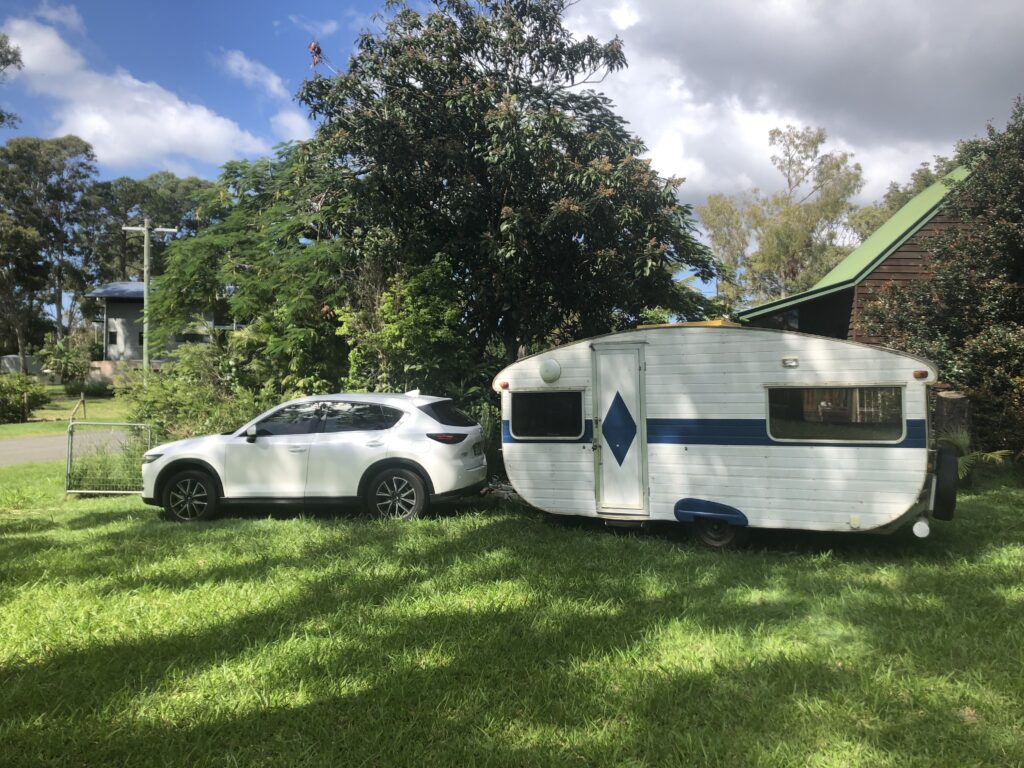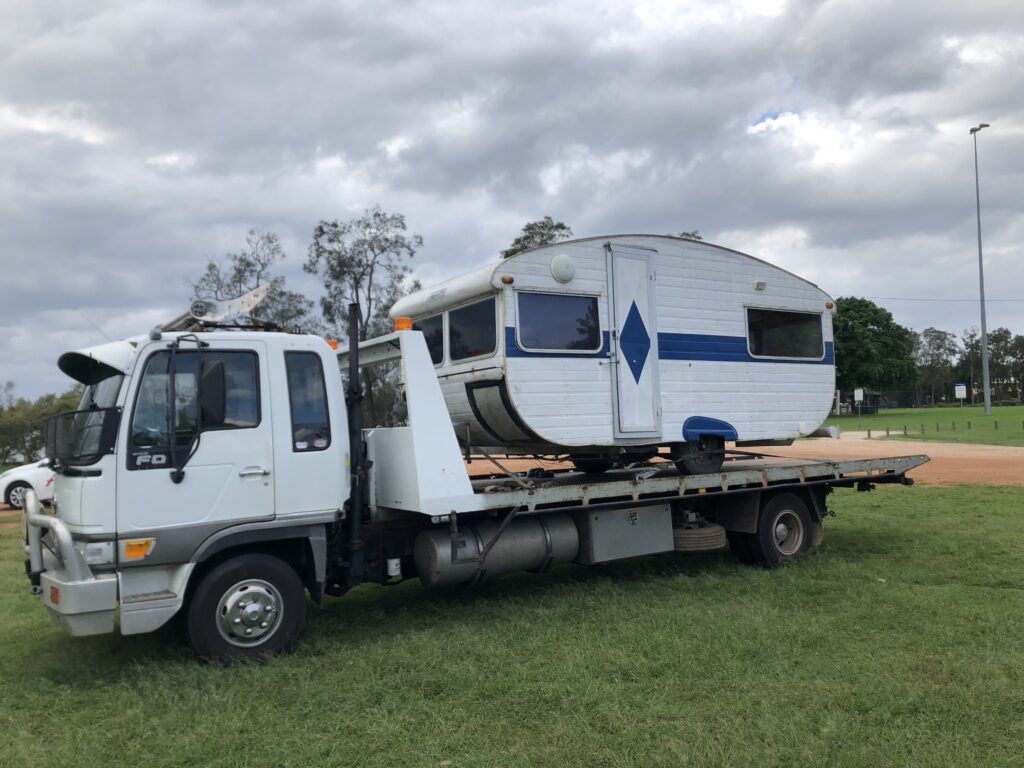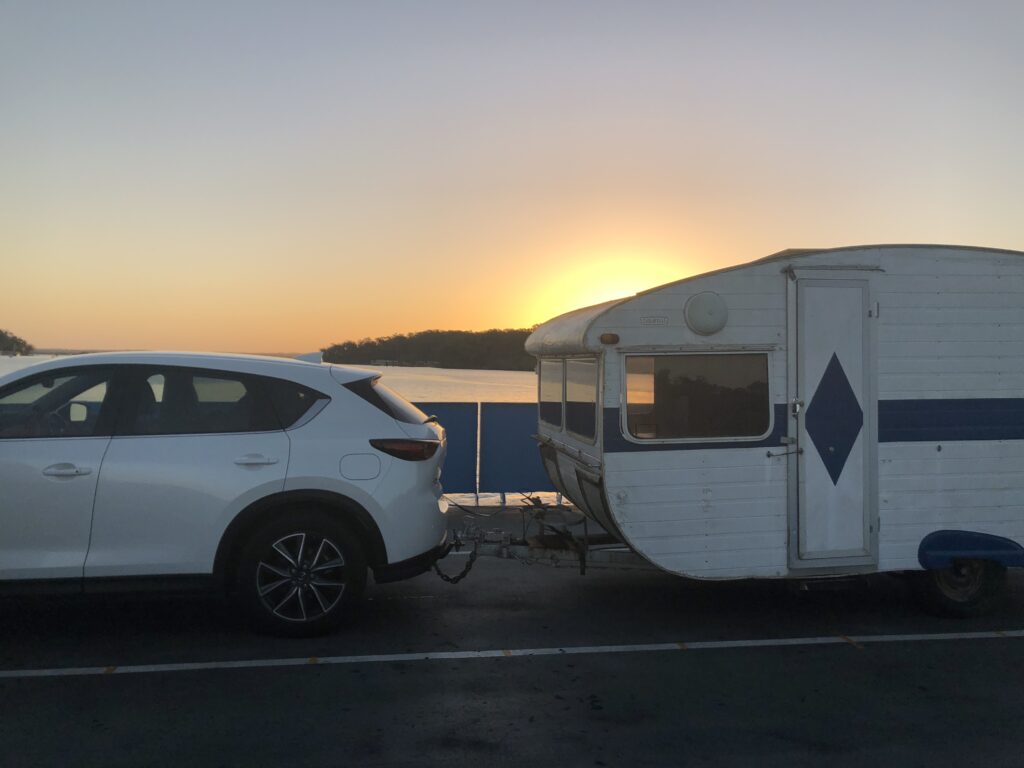In early 2019, we decided to bring Chickie home and start the restoration process to put her back on the road.
We already knew the original wood frame and plywood had some serious issues.
The previous owner had used liquid nails to attach a piece of new plywood to the ceiling around the hatch.
The plywood at the front and rear had completely rotted away and also been covered with a patch. While we could live with that on the island, it wasn’t going to work long term.
I’d also realised before moving her that the drawbar had some serious rust issues. The wheels, brakes and axle didn’t look that great either.
First priority I thought would be to get those chassis issues fixed, and then move on to fixing the rest. Rather than risk towing her to a repair shop for that piece of work, I towed Chickie on and off the ferry to leave the island. We then arranged for a truck to take her the rest of the way.



Finding expert advice
Over the years I’d researched as much as I could about vintage Australian caravans and come across some excellent resources:
Vintage Caravan Proboards is full of information on the history of older caravans, repairs, and sourcing of parts. I’d also found Retro Caravans on the Gold Coast, and had been in touch with Brendan there about repairs both for the Franklin and our Airstream.
The big day finally arrived, and we trucked Chickie down to Brendan for a new drawbar, wheels, axle and brakes. The news was not good.
The timber frame at the front had rotted away so far that Brendan thought all that was holding the front of the van up was the drawbar. There was no way to do the repairs without risking the whole van falling apart.
We needed to make a decision – let Chickie continue to rot away on the island, or have a crack at rebuilding her. I’d rebuilt two 50+ year old timber boats in the past, so thought I would have the skills. And at least the van didn’t have to float.
We decided to go all in – truck her to our house, and see if she could be saved.